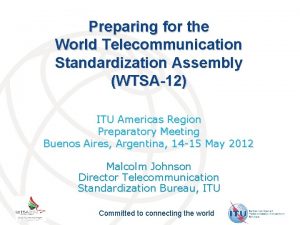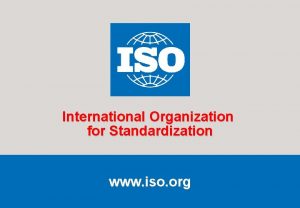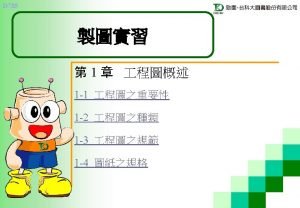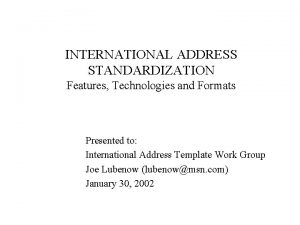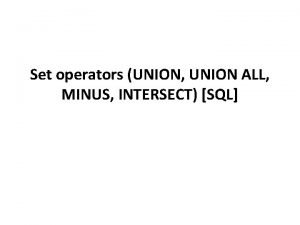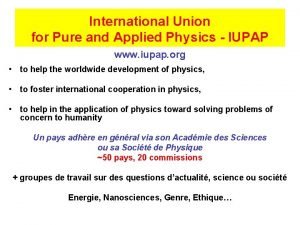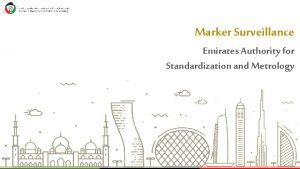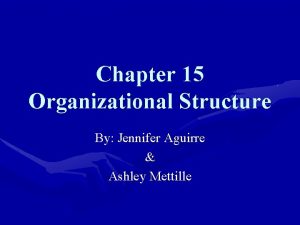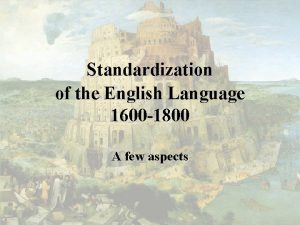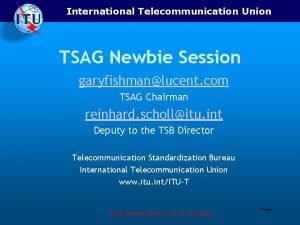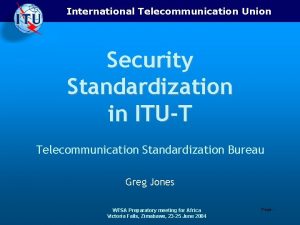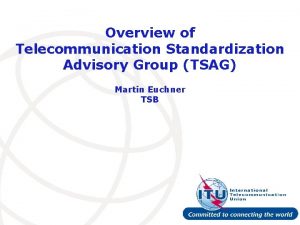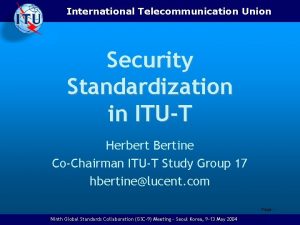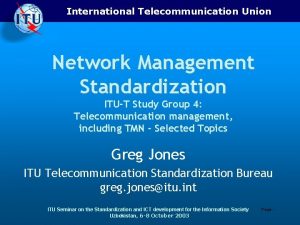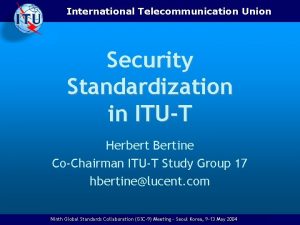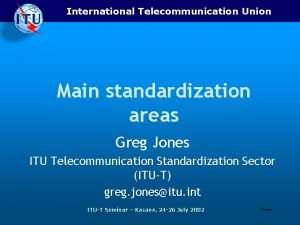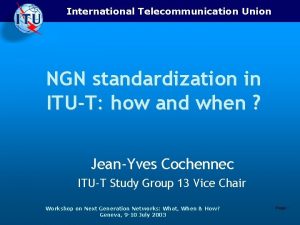TSAG RG WPR INTERNATIONAL TELECOMMUNICATION UNION TELECOMMUNICATION STANDARDIZATION










- Slides: 10

TSAG RG WPR INTERNATIONAL TELECOMMUNICATION UNION TELECOMMUNICATION STANDARDIZATION SECTOR TSAG-WPR-03 STUDY PERIOD 2013 -2016 English only Original: English Question(s): TSAG RG WPR Geneva, 29 June – 1 July 2016 TD Source: CITEL Title: CITEL Preparations for WTSA-16 (Structuring) Abstract: This contribution provides an overview of the CITEL study group structuring preparations for WTSA-16 Inter-American Telecommunication Commission (CITEL)

CITEL PREPARATIONS FOR WTSA-16 (SG Structuring) Inter-American Telecommunication Commission (CITEL) 2 Inter-American Telecommunication Commission CITEL(CITEL) (June 2016)

Inter-American Proposals (IAPs) • Proposal: a proposal submitted for discussion with a view to it becoming a Draft Inter-American Proposal and, subsequently, and Inter-American Proposal • Draft Inter-American Proposal (Draft IAP): A Proposal that, after being considered and discussed by the Member States, has the support of more than 1 (one) Administration • Inter-American Proposal (IAP): A Proposal or Draft IAP for which PCC. I has concluded its considerations and discussion, and that has the support of at least six (6) Administrations and is not opposed by more than 50% (fifty percent) of the number of supports obtained Inter-American Telecommunication Commission (CITEL)

Draft Inter-American Proposals (DIAPs) – Principles of Study Group Structuring – Redistributing the work of ITU-T SG 9 – ITU-T Study Group Restructuring – Distribution of SG 11 work to SG 13, SG 12 and SG 20 Inter-American Telecommunication Commission (CITEL)

DIAP-1: Principles of Study Group Structuring v CITEL Member States propose 14 SG structuring principles to enable the development of timely and technically sound standards v The structure 1. 2. 3. 4. 5. 6. 7. 8. should be concise, and give clear guidance to the ITU-T membership on the priorities and goals for the upcoming four years must take into account the Financial and Operational Plans of the Union should provide synergy, address issues such as transparency, efficiency and concentrate on the ITU-T’s established base principles and core areas of work must minimize overlap and maximize synergy among the work programs should make ITU-T an attractive place to develop international Telecommunication/ICT standards should avoid duplication of work among ITU-T study groups and the Union should facilitate effective and efficient development of international Telecommunication/ICT standards must support coordination and common approaches at the working level, and provide flexibility in the grouping of work as well as economies for the delegates 5 Inter-American Telecommunication Commission (CITEL)

DIAP-1: Principles of Study Group Structuring 9. should allow dissimilar topics to run independently within one group 10. should account for potential future technology needs 11. Groups should provide: § adequate diversity of interests, including equitable geographical distribution; § challenging, interesting, cross-fertilized and sizeable work program; § an adequate talent pool for leaders, taking into consideration gender and regional balance; § legitimacy in representing ITU-T to external organizations 12. Questions that define the studies to be executed should reflect broad and ongoing interest of the membership 13. Groups should undertake studies that are limited to those that can have impact on telecommunication/ICT standards 6 Inter-American Telecommunication Commission (CITEL)

DIAP-1: Principles of Study Group Structuring 14. ITU-T work programme should concentrate on ITU-T’s core competencies as reflected in the goals, objectives and outputs in the Strategic Plan, taking due account of the need to avoid replicating work already being addressed under the competencies of other standards bodies and within ITU, maximizing efficiencies, and establishing mechanisms to enhancing close cooperation and collaboration with other entities 7 Inter-American Telecommunication Commission (CITEL)

DIAP-10: ITU-T Study Group Restructuring – Distribution of SG 11 work to SG 13, SG 12, and SG 20 v CITEL Member States propose the following work changes: 1. Merge Q 1/11, Q 2/11, Q 3/11, Q 4/11, Q 5/11, Q 6/11, Q 7/11, Q 8/11, Q 9/11, Q 11/11, Q 13/11 and Q 14/11 into SG 13 2. Merge Q 10/11 and Q 15/11 into SG 12 3. Merge Q 12/11 into SG 20 4. Transfer the Lead Role on signalling and protocols to SG 13, consistent with the transfer of related Questions 5. Disperse the Lead Role responsibilities of test specifications and conformance and interoperability testing to all Study Groups preparing Recommendations that are the subject of these activities by adding appropriate sentences to each Study Group’s responsibilities 6. Retire SG 11 from the ITU-T Inter-American Telecommunication Commission (CITEL)

DIAP-11: Redistributing the work of ITU-T Study Group 9 v CITEL Member States propose to retire ITU-T Study Group 9 and distribute the work as follows: § Move Q 9/9 (Home Networking) and Q 11/9 (Optical Access) to ITU-T SG 15 § Move Q 12/9 (Audio-visual Quality) to ITU-T SG 12 § Move the remainder of ITU-T SG 9 (Q 1, 2, 3, 4, 5, 6, 7, 8, 10 and 13) to ITU-R SG 6 (Broadcasting) Inter-American Telecommunication Commission (CITEL)

Thank you very much for your attention PCC. I/CITEL http: //www. citel. oas. org citel@oas. org 10 Inter-American Telecommunication Commission (CITEL)
 World telecommunication standardization assembly
World telecommunication standardization assembly Iso international organization for standardization
Iso international organization for standardization International organization for standardization
International organization for standardization International address formats
International address formats Sql union minus intersect
Sql union minus intersect International union of forest research organizations
International union of forest research organizations International union of pure and applied physics
International union of pure and applied physics Standardization of outputs
Standardization of outputs Esma accredited laboratories
Esma accredited laboratories Coordination through formal hierarchy relies on
Coordination through formal hierarchy relies on Scotlöand
Scotlöand
